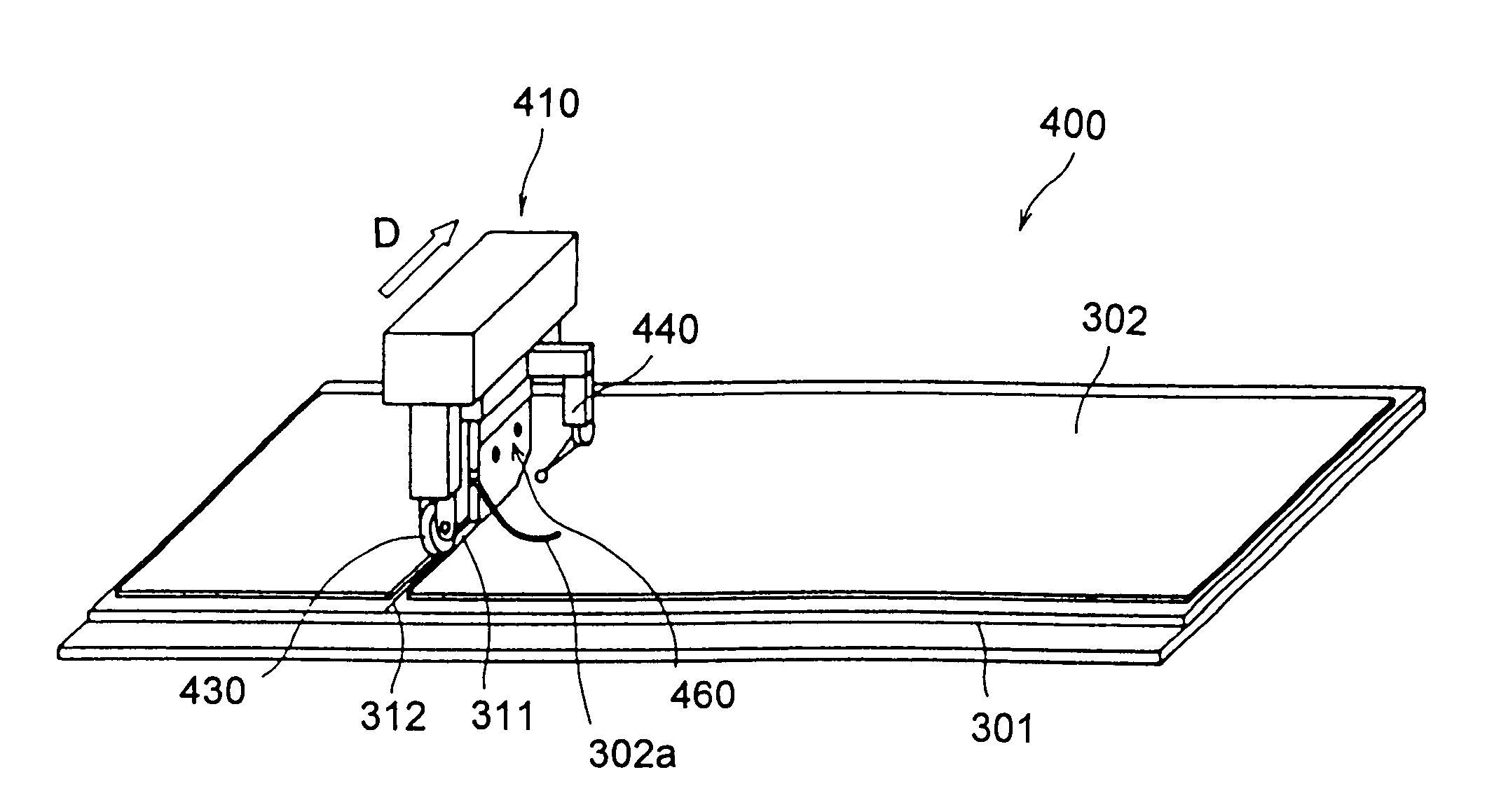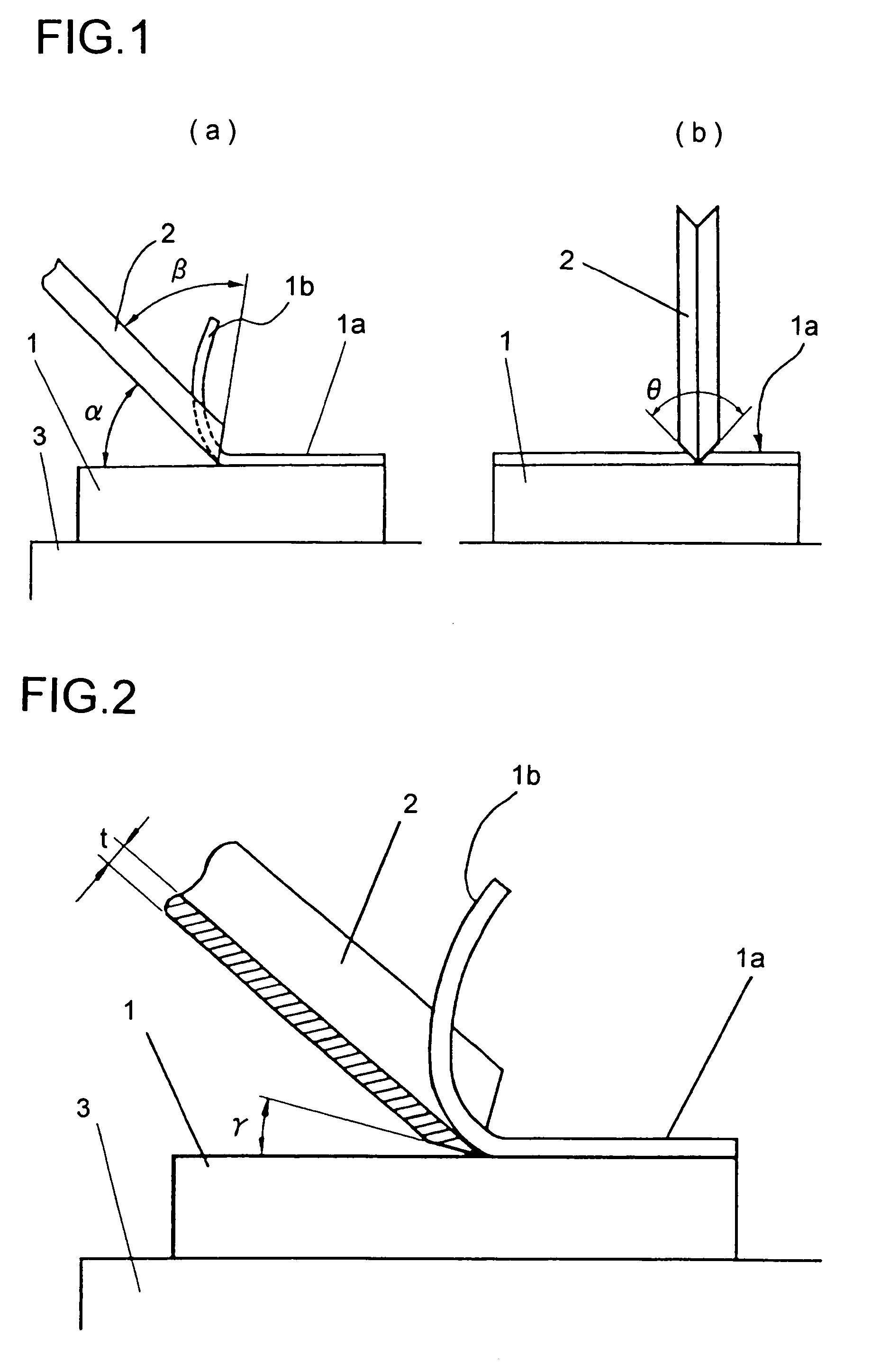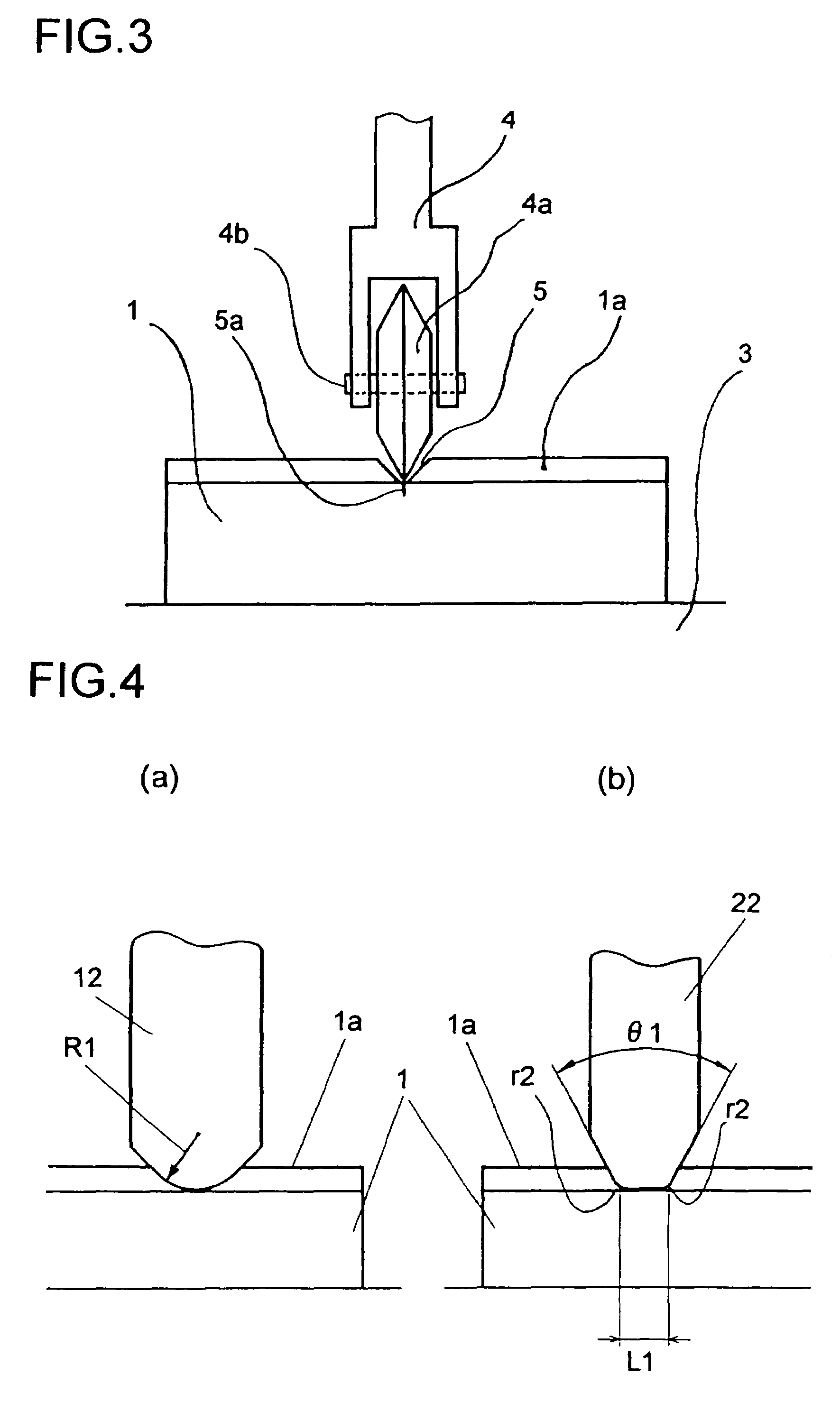Method and device for parting glass substrate, liquid crystal panel, and liquid crystal panel manufacturing device
a technology of glass substrate and manufacturing device, which is applied in the direction of glass reforming apparatus, glass tempering apparatus, packaging, etc., can solve the problems of destroying the scribed line deposited film, affecting the quality of the product, and causing the product to be ruined, so as to improve the mechanical strength and prevent the effect of exfoliation
- Summary
- Abstract
- Description
- Claims
- Application Information
AI Technical Summary
Benefits of technology
Problems solved by technology
Method used
Image
Examples
ninth embodiment
[0090]The holder portion 52b is formed preferably of an appropriately elastic material, for example resin such as Duracon or Delrin, or more flexible rubber such as silicone rubber or nitrile rubber, or, in some cases, wood. By so doing, even if there are variations or the like in the thickness or hardness of the deposited film to be shaved, the elasticity of the holder portion 52b absorbs variations in the resistance to cutting and shaving. This can be used as a safety mechanism in a cutting apparatus to which the techniques of this embodiment are applied. The shaving cutter 52 may be given elasticity by exploiting the action of coil springs 77a and 77b (see FIGS. 15 and 17), which will be described later in connection with a
[0091]The blade of the cutter used to cut and shave the deposited film 1a in the first to sixth embodiments is formed of a common material, such as carbon tool steel or martensitic stainless steel, hardened by heat treatment or the like as required. However, th...
seventh embodiment
[0094]In the glass substrate cutting step following the scribing step, a pressing force is applied to the surface opposite to that on which the scribed line is formed so that the crack in the scribed line develops until the glass substrate breaks apart. In methods in which scribing is performed on the bottom 1c of the shaved groove 5 formed in the deposited film 1a, in the cutting step following the scribing step, it is necessary to apply a pressing force and cut the glass substrate from below the surface thereof opposite to the scribed surface. Thus, for example, in methods in which the scribed surface, i.e., the film-deposited surface, of the glass substrate is placed directly on the surface plate and a load is applied thereto from above by a press or roller, the pressing force applied to cut apart the glass substrate may destroy or deform the deposited film layer placed directly on the workpiece stage. By contrast, in the cutting method of the seventh embodiment, a pressing force...
eighth embodiment
[0097]Next, the workings of the eighth embodiment will be described with the focus placed on what is illustrated in the figures. FIG. 11 shows how a deposited film 1a formed on a glass substrate 1 is shaved and removed by a shaving cutter 62. The angle θ9 at which the shaving cutter is arranged relative to the glass substrate corresponds to the rake angle with which cutting and shaving are performed, and is determined appropriately in the range of from 35° to 45° according to the thickness and material of the deposited film. In this embodiment, when this angle was set equal to 43°, a 1 mm-thick rubber-based deposited film was cut and shaved with satisfactory results. FIG. 11 shows how the shaving cutter 62, while moving in the direction H, cuts and shaves the deposited film 1a. The waste strip 1b shaved off is smoothly ejected along an arc-shaped groove marked as G in FIG. 10. The pressing force with which the shaving cutter 62 is pressed vertically downward against the surface of t...
PUM
| Property | Measurement | Unit |
|---|---|---|
| opening angle | aaaaa | aaaaa |
| sensing force | aaaaa | aaaaa |
| angle | aaaaa | aaaaa |
Abstract
Description
Claims
Application Information
 Login to View More
Login to View More - R&D
- Intellectual Property
- Life Sciences
- Materials
- Tech Scout
- Unparalleled Data Quality
- Higher Quality Content
- 60% Fewer Hallucinations
Browse by: Latest US Patents, China's latest patents, Technical Efficacy Thesaurus, Application Domain, Technology Topic, Popular Technical Reports.
© 2025 PatSnap. All rights reserved.Legal|Privacy policy|Modern Slavery Act Transparency Statement|Sitemap|About US| Contact US: help@patsnap.com



